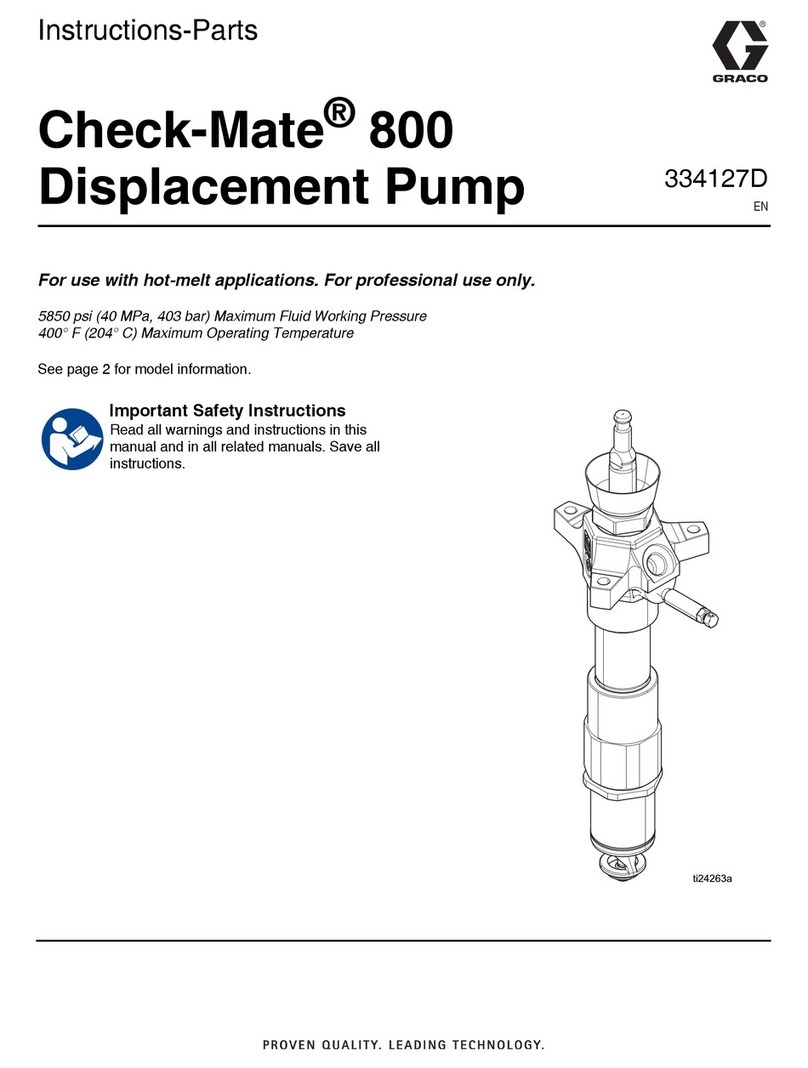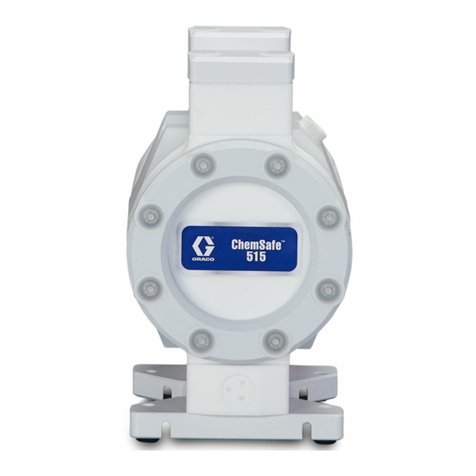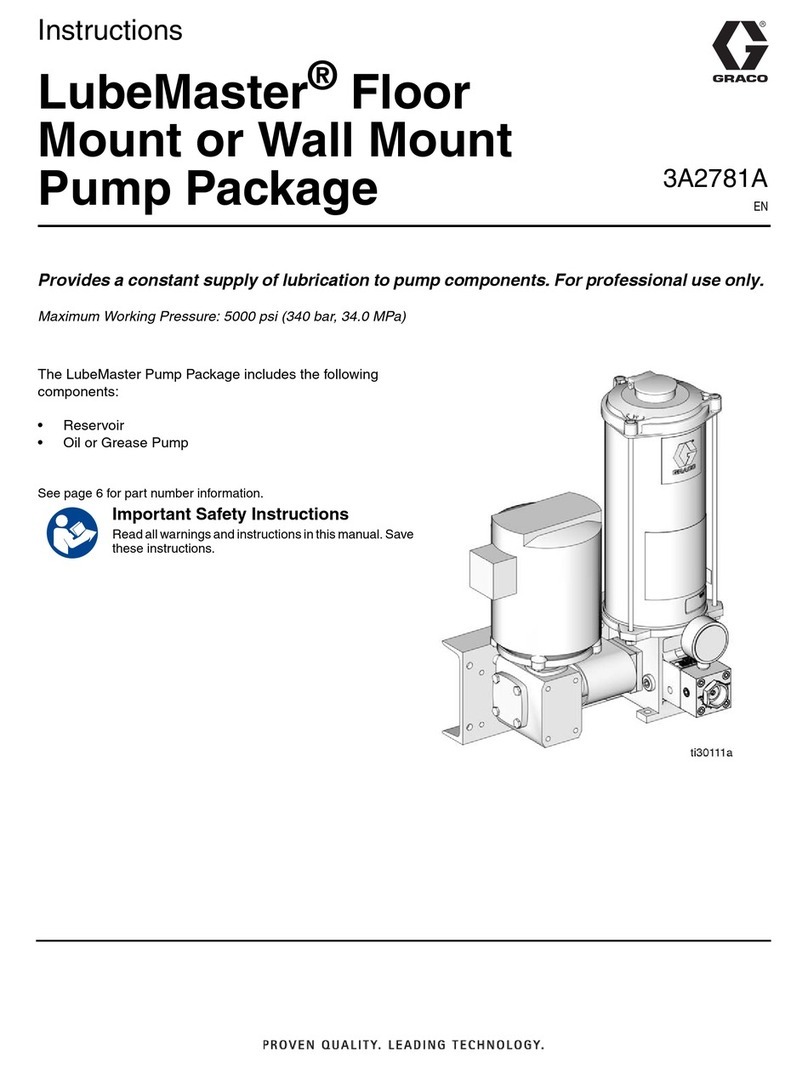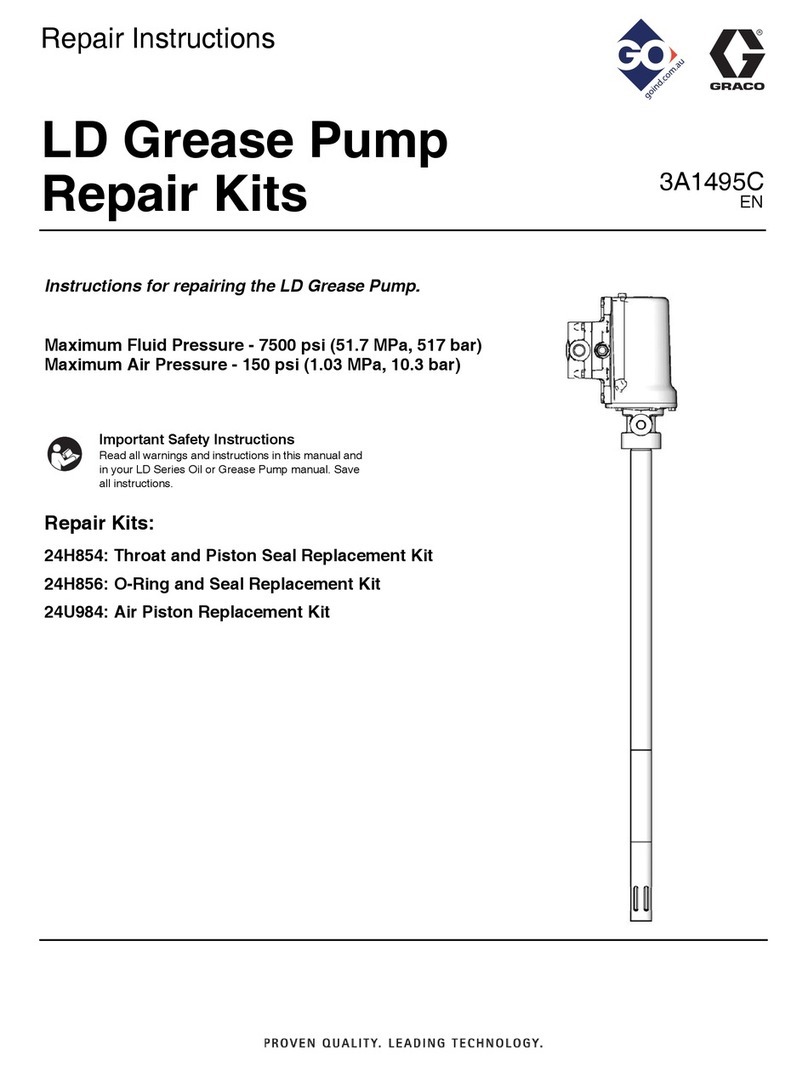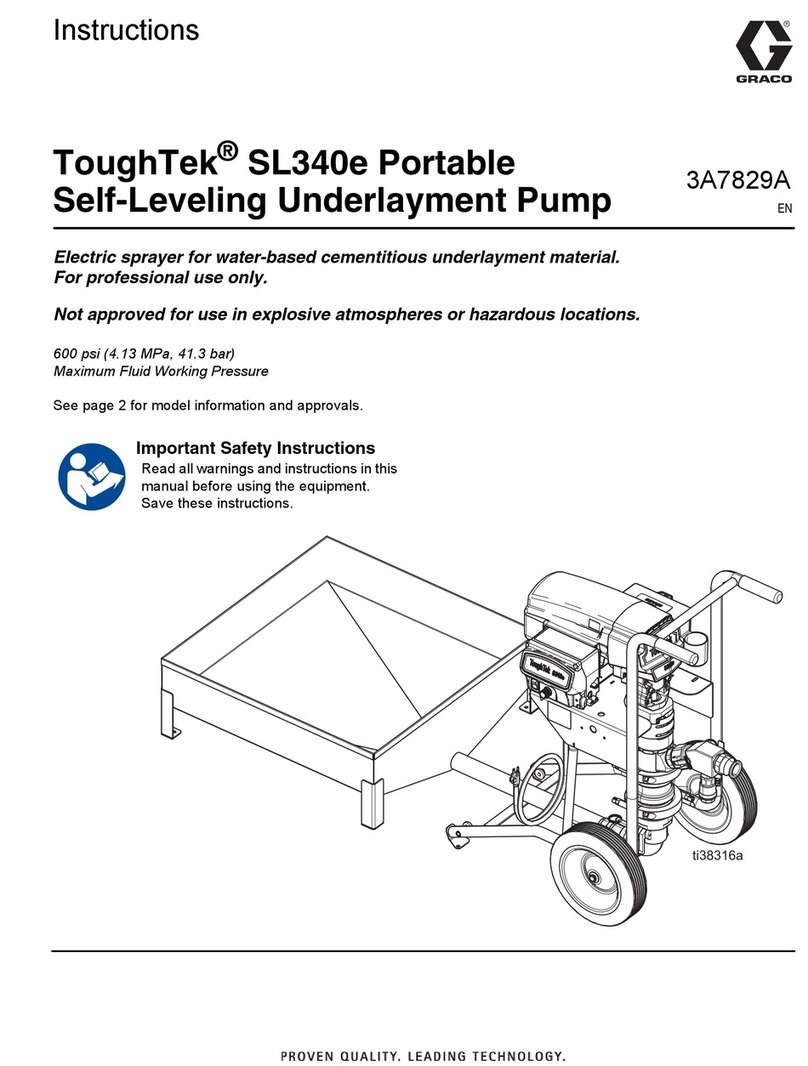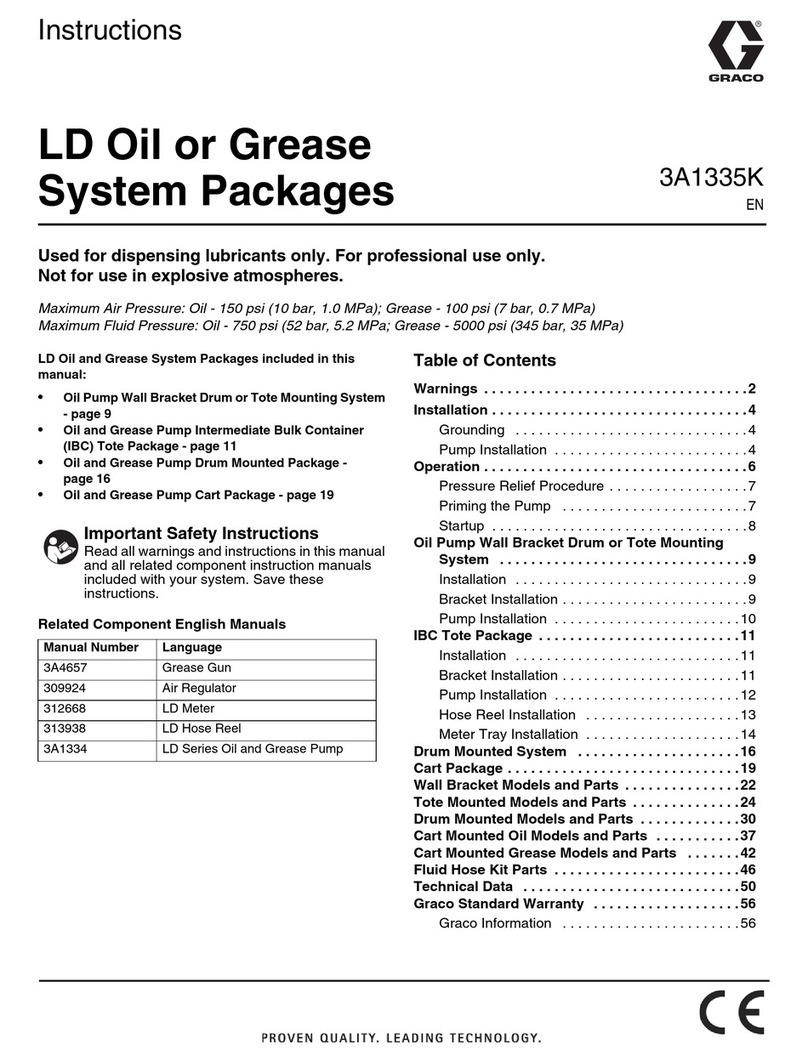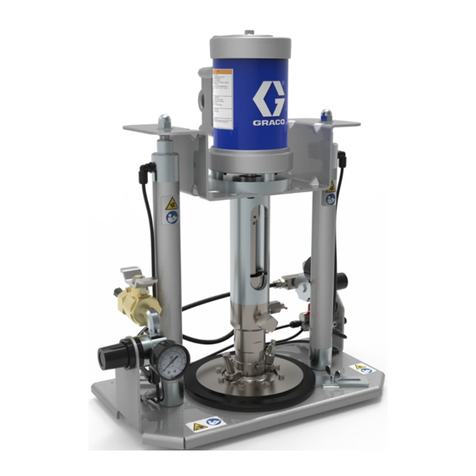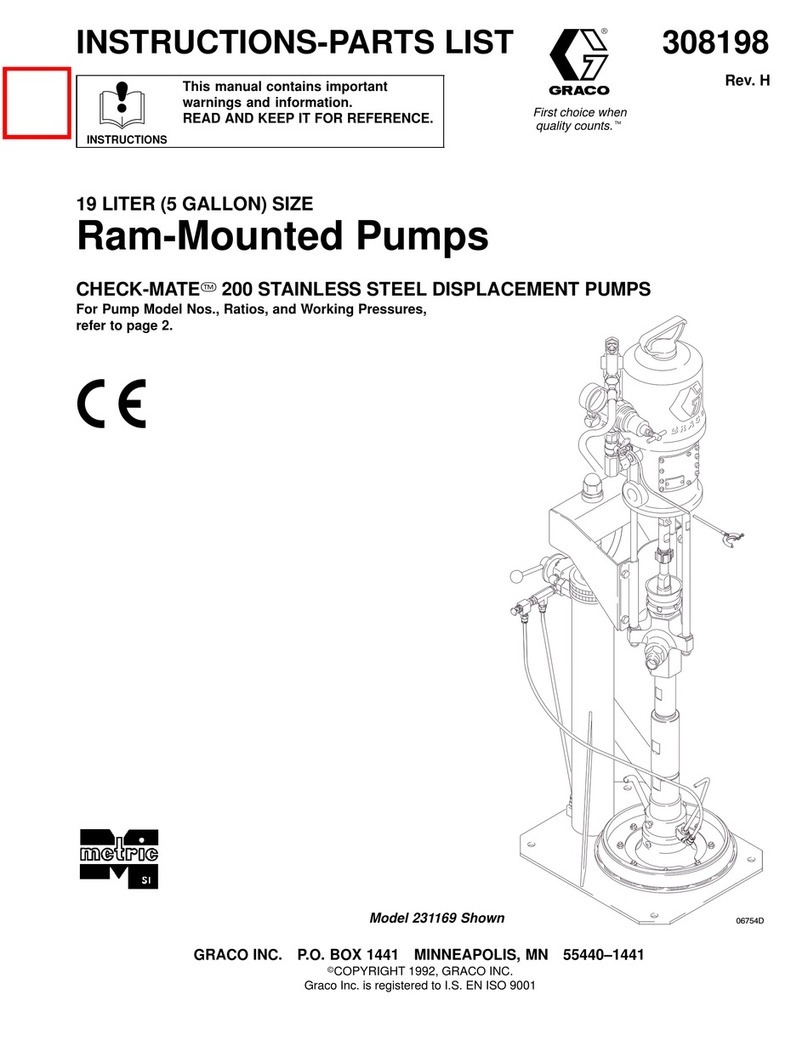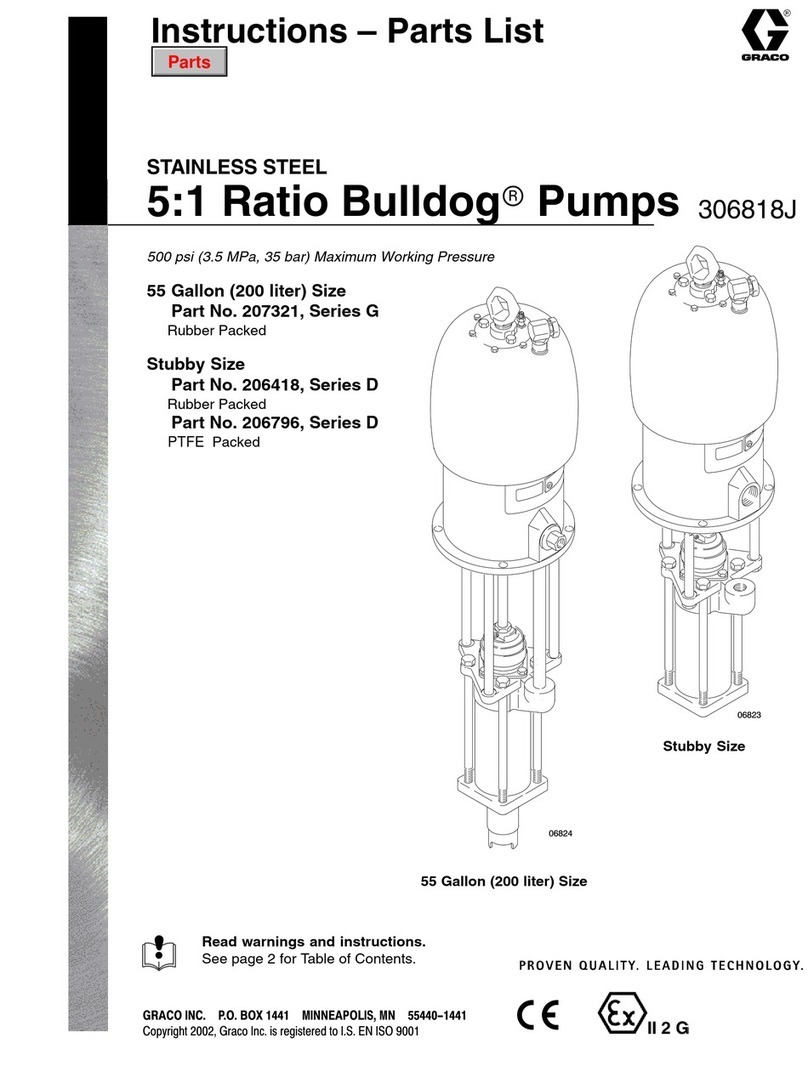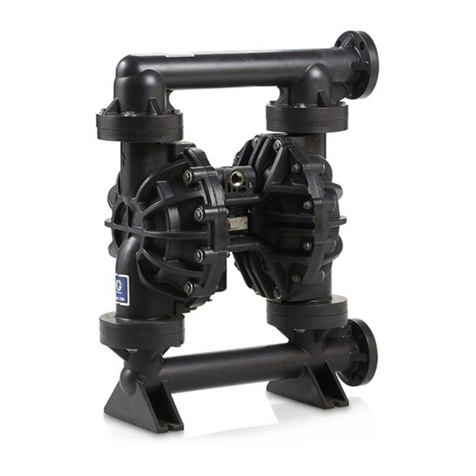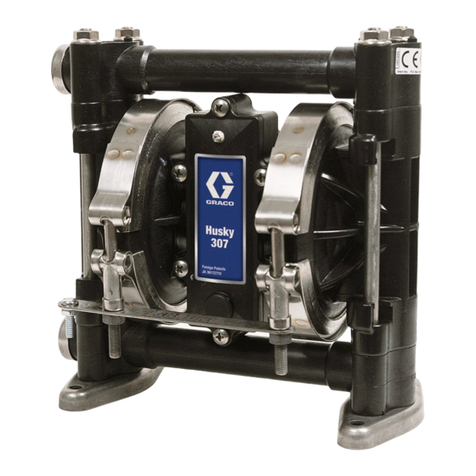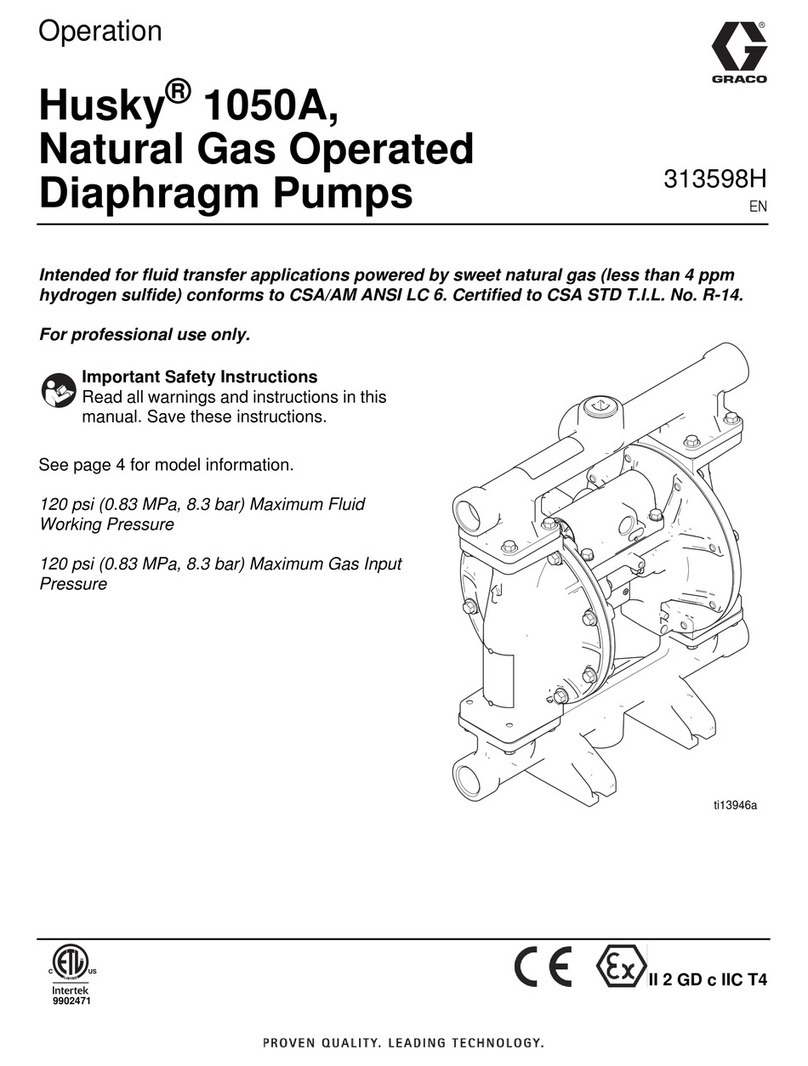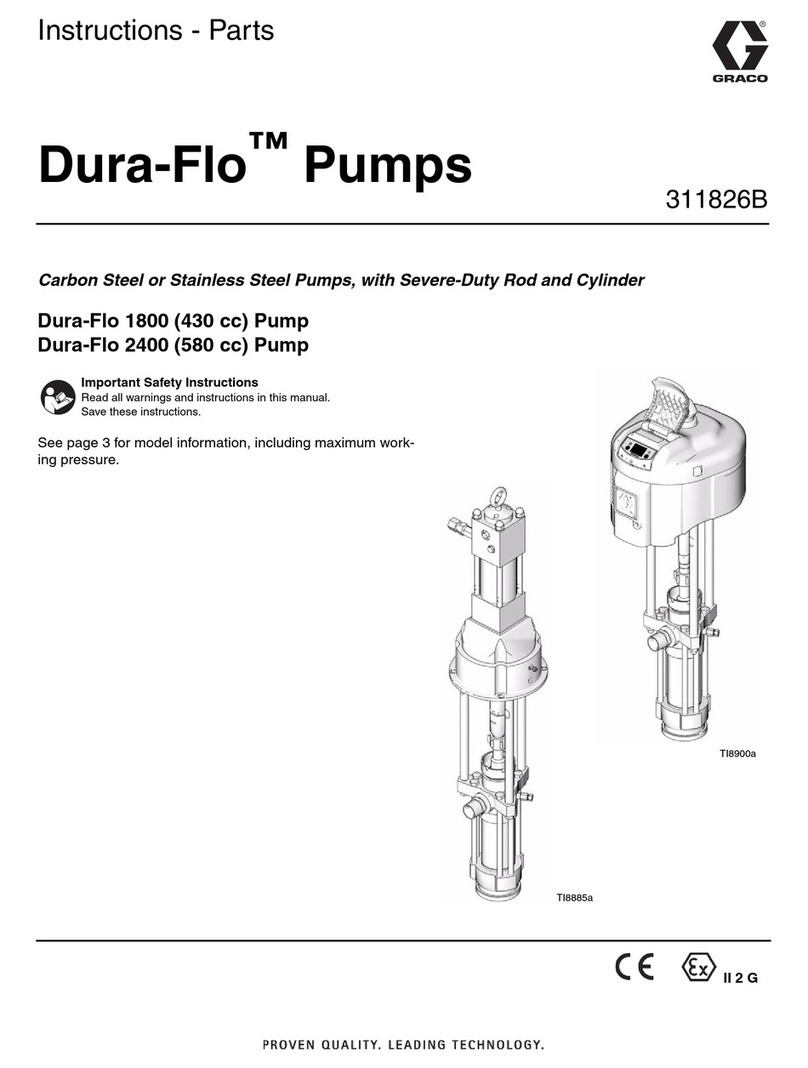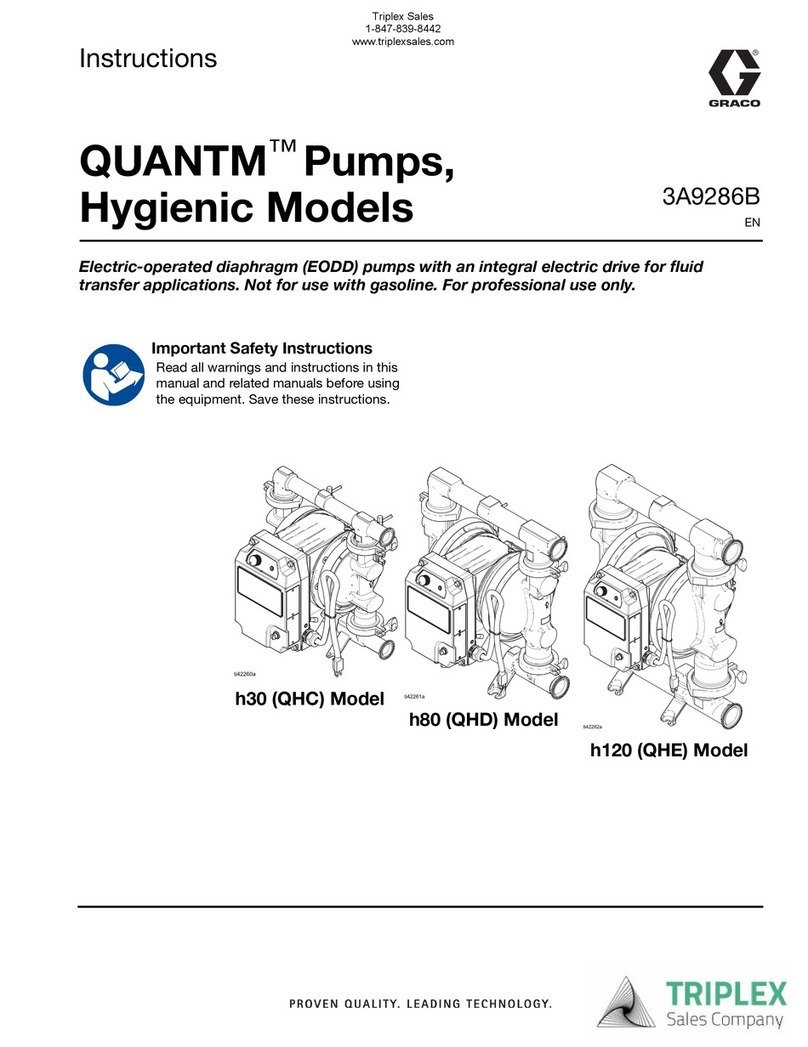
6 308–017
Installation
General Information
NOTE:
Reference numbers and letters in parentheses
in the text refer to the callouts in the figures and the
parts drawings.
NOTE:
Always use Genuine Graco Parts and
Accessories, available from your Graco distributor
.
Refer to the Product Data Sheet, Form No. 305–546. If
you supply your own accessories, be sure they are
adequately sized and pressure-rated to meet the
system’
s requirements.
Fig. 1 is only a guide for selecting and installing sys
-
tem components and accessories. Contact your Graco
distributor for assistance in designing a system to suit
your particular needs.
System Accessories
WARNING
A
red-handled main air bleed valve (V), pump air
bleed valve (G), and fluid drain valve (L) are re
-
quired. These accessories help reduce the risk of
serious injury
, including fluid injection and splashing
of fluid in the eyes or on the skin, and injury from
moving parts if you are adjusting or repairing the
pump.
The red-handled main air bleed valve (V) shuts of
f
and relieves the air to the pump and ram. Order
Part No. 1
13–269 for Monark and President
Pumps, or 113–218 for Senator and Bulldog
Pumps. The ram will hold pressure if the ram
director valve (U) is in the horizontal (neutral)
position. T
o relieve air pressure in the ram, close
the red-handled bleed valve (V) and move the
director valve (U) to DOWN. The ram will slowly
drop.
The pump air bleed valve (G) relieves air trapped
between it and the pump after the air is shut of
f.
T
rapped air can cause the pump to cycle unexpect
-
edly
. Locate the valve close to the pump.
The fluid drain valve (L) assists in relieving fluid
pressure in the displacement pump, hose, and gun.
T
riggering the gun to relieve pressure may not be
suf
ficient. Order Part No. 210–658 (3/8 npt).
Air Line
Install the following accessories as shown in Fig. 1,
using adapters as necessary:
A red-handled main air bleed valve (V)
is re
-
quired in your system to shut of
f the air supply to
the pump and ram (see the
WARNING
at left).
When closed, the valve will bleed of
f all air in the
ram and pump, and the ram will slowly drop. Be
sure the valve is easily accessible from the pump,
and is located
upstream
from the air manifold (D).
The pump air bleed valve (G)
is required in your
system to relieve air trapped between it and the air
motor when the valve is closed (see the
WARNING
at left). Be sure the valve is easily accessible from
the pump, and is located
downstream from the air
regulator (H).
The
pump air regulator (H)
controls pump speed
and outlet pressure by adjusting the air pressure to
the pump. Locate the regulator close to the pump,
but
upstream
from the pump air bleed valve (G).
An
air line lubricator (F)
provides automatic air
motor lubrication.
A
pump runaway valve (E
) senses when the
pump is running too fast and automatically shuts of
f
the air to the motor
. A pump which runs too fast can
be seriously damaged.
An air manifold (D)
has a swivel air inlet. It has
ports for connecting lines to air accessories, such
as the
ram air regulator (T),
which controls the air
pressure to the ram.
The air pressure relief valve (Q)
limits the air
pressure to the ram to 10 bar (150 psi).
The ram director valve (U)
controls the raising
and lowering of the ram.
An
air line filter (J)
removes harmful dirt and mois
-
ture from the compressed air supply
. Also, install a
drain valve (W)
at the bottom of each air line drop,
to drain off moisture.
A bleed-type air valve (K)
isolates the air line ac
-
cessories for servicing. Locate upstream from all
other air line accessories.

